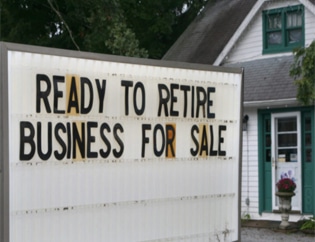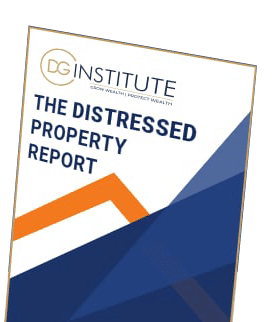Outperforming Suburbs in House Price Growth
Published 7:16 am 23 Feb 2024

Welcome to this week’s edition of Property Edge, your comprehensive guide to the latest trends and news in the Australian property market. Stay informed with our curated selection of articles that shed light on the current state of the market, investment opportunities, and the economic factors influencing property prices.
Property Council Calls for Increased Incentives to Meet Housing Targets
The Property Council of Australia has urged the federal government to significantly increase its financial incentives to states and territories in order to achieve national housing targets by the end of the decade. The Council’s spokesperson, Matthew Kandelaars, highlighted the importance of setting clear national housing targets and stressed that the current $3.5 billion incentive handout needs to be doubled for states and territories to successfully meet their respective housing goals. This call to action comes as part of the Property Council’s pre-budget submission, emphasising the need for enhanced measures to manage and achieve the desired outcomes in the housing sector.
While the Property Council of Australia advocates for more homes, let’s shift our focus to the suburbs that are outperforming the market, highlighting the areas where property values are surging beyond expectations.
Outperforming Suburbs in House Price Growth
Analysis of PropTrack data has identified the top suburbs across Australia where house price growth has exceeded local market averages. The strongest growth was observed in Perth, Adelaide, and South East Queensland, with some suburbs experiencing price increases of over 20% in the past year. In contrast, Sydney and Melbourne saw more modest growth, with top-performing suburbs in these cities achieving 10-20% and 4-8% growth, respectively.
The data suggests that more affordable regions have maintained their outperformance, particularly as interest rates continue to rise and housing affordability remains at multi-decade lows. This trend is evident in Brisbane, where top growth suburbs are among the most affordable in their respective regions. Similarly, in Perth and Adelaide, affordable suburbs have seen significant price jumps.
PropTrack’s senior economist, Eleanor Creagh, attributes the strong performance of these suburbs to stretched affordability and limited supply in Australia’s more affordable capitals. As a result, these cities are expected to continue outperforming in 2024, despite potential constraints from affordability and a slowing economy.
These figures highlight the top-performing suburbs in each city based on year-over-year house price growth.
Queensland:
- Woodridge (Logan – Beaudesert) – 24.5% YoY change
- Caboolture South (Moreton Bay – North) – 22.3% YoY change
- Runcorn (Brisbane – South) – 23.4% YoY change
- Hemmant (Brisbane – East) – 17.4% YoY change
- Wooloowin (Brisbane Inner City) – 18.2% YoY change
Western Australia:
- Greenfields (Mandurah) – 29.5% YoY change
- Kelmscott (Perth – South East) – 28.6% YoY change
- Warnbro (Perth – South West) – 27.7% YoY change
- Girrawheen (Perth – North West) – 26.9% YoY change
- Stratton (Perth – North East) – 24.7% YoY change
South Australia:
- Elizabeth North (Adelaide – North) – 26.7% YoY change
- Hackham West (Adelaide – South) – 21.8% YoY change
- Lobethal (Adelaide – Central and Hills) – 19.6% YoY change
- Woodville Gardens (Adelaide – West) – 12.6% YoY change
- Nuriootpa (Barossa – Yorke – Mid North) – 16.3% YoY change
New South Wales:
- Moree (New England and North West) – 25.3% YoY change
- Belmore (Sydney – Inner South West) – 15.8% YoY change
- Vaucluse (Sydney – Eastern Suburbs) – 15.2% YoY change
- North Parramatta (Sydney – Parramatta) – 17.0% YoY change
- Erskineville (Sydney – City and Inner South) – 11.7% YoY change
Victoria:
- Rosedale (Latrobe – Gippsland) – 9.7% YoY change
- Waterways (Melbourne – Inner South) – 7.9% YoY change
- Notting Hill (Melbourne – South East) – 8.5% YoY change
- Doncaster East (Melbourne – Inner East) – 6.9% YoY change
- Wantirna South (Melbourne – Outer East) – 6.6% YoY change
Tasmania:
- Westbury (Launceston and North East) – 8.0% YoY change
- Smithton (West and North West) – 6.8% YoY change
- Ranelagh (South East) – 1.3% YoY change
Northern Territory:
- Humpty Doo (Darwin) – 10.7% YoY change
- Katherine East (Northern Territory – Outback) – 0.2% YoY change
Australian Capital Territory:
- Campbell – 13.3% YoY change
As we’ve seen certain suburbs exceed growth expectations, it’s also interesting to observe the pace at which properties are being snapped up. Let’s delve into the hotspots where homes are selling at record speeds, reflecting the dynamic nature of the market.
Perth Leads in Quick Property Sales Amid Record On-Market Times
n an unprecedented property market trend, homes in Perth are being sold at a cracking pace, with the average time on market now just 11 days, the lowest in the country. According to Ray White’s data, 84 of the top 100 quickest-selling suburbs in Australia are in Perth, with Seville Grove and Cooloongup leading the way, where properties are on the market for an average of just five days.
In contrast, Sydney’s fastest-selling suburbs, St Clair and Werrington Downs, have an average on-market time of 11 days, while Melbourne’s Skye and Kilsyth properties are selling within 14 days. Ray White’s chief economist, Nerida Conisbee, notes that affordability is a key trend, with low-cost housing selling the quickest, particularly in cities like Perth and Adelaide, which have the lowest capital city medians.
Property inspections in January also saw high levels of interest, with an average of 16.5 visitors per home, above the three-year average. This increased activity is contributing to rising Australian house prices. McGrath’s CEO, John McGrath, remarked on the strong start to 2024, highlighting good listing volumes and a stable property market despite economic challenges.
While some areas experience fast growth and rapid sales, it’s important to consider the broader economic context. We’ll now explore the challenges facing Australian households, with incomes expected to remain under pressure for the foreseeable future.
Australian Household Income Decline to Persist Until 2027
Australia is experiencing a prolonged decline in household real incomes, with an expected recovery to pre-pandemic levels not anticipated until 2027. In the year to September 2023, household incomes fell by 6.1% when adjusted for inflation, marking the most significant drop among OECD economies. This decline has brought real household incomes back to levels last seen in 2017.
Economists from Deloitte Access Economics, Stephen Smith and Chris Richardson, predict that real incomes will continue to decline until mid-2024. While the revised stage three tax cuts are expected to provide a slight increase in real household disposable income, they will not be sufficient to counteract the downturn since the pandemic. Richardson emphasises the need for higher productivity growth to improve living standards in the long run.
The ongoing decline in real incomes presents a political challenge for the Albanese government, with the cost of living emerging as a top concern for voters. The decline is attributed to high inflation, increased personal taxes, and rising interest rates affecting variable rate borrowers. Although households have retained about three-quarters of their pandemic-era savings, not all of these funds are readily accessible for spending.
Economists do not expect real household incomes to return to their pre-pandemic levels until at least 2025, with some predicting a recovery by 2027. Despite this, real household wealth has increased by 12% compared to pre-pandemic levels, indicating that consumers may not be as financially disadvantaged as the income data suggests.
Thank you for joining us for another edition of Property Edge. We hope this week’s insights have provided you with valuable information to navigate the ever-evolving property market. Stay tuned for more updates and analysis in our next newsletter.
NEW LIVE IN PERSON PROPERTY WORKSHOP: Our ONLY and FINAL live event!
Final chance to grab tickets to Property Entrepreneurs Summit. Over two days in this live fully catered event, we will show you how to find and flip properties for cash profits with potentially little to none of your own money from the ‘4d’s’ of real estate investing: distress, deceased estates, downsizers and developers under duress. This isn’t just a workshop, it’s a game-changer with a target of doing 100K deal in next 6 months. We are covering topics that others might shy away from, but we’re about to rip the lid off.
- When: Saturday 2nd March & Sunday 3rd March 2024 (Hyatt Sydney)
- Time: 9:00 am to 5:00pm
Exclusive Offer $100 Voucher For The First 10 People!
As a token of our appreciation for your continued support and enthusiasm, we are thrilled to offer an exclusive bonus for the first 10 people who enroll today. Use the code HYT and receive a $100 voucher when registering. It’s our way of saying thank you and ensuring you’re part of this unforgettable gathering. Click here to get all the details and to secure your seat.
You May Also like to Read
Pressing issues affecting homeowners and prospective buyers
Welcome to this week's edition of the Property Edge newsletter. As we navigate the ever-evolving landscape of Australia’s...
Why Australia Will Never Build Enough Homes
Welcome to this week's edition of the Property Edge newsletter. As we navigate through a rapidly evolving property...
Unlocking Potential: Uncovering Hidden Gems in Australia’s Property Market
Welcome to this edition of Property Edge, where we delve into the latest trends and insights shaping the Australian property...
Suburbs on the Rise: Property Searches Indicate Growth Potential
Welcome to the latest edition of Property Edge, where we delve into the dynamic world of real estate. In this issue, we...
Builder Insolvencies Threaten Government’s Housing Target
Welcome to this week's edition of Property Edge, where we delve into the current state of the property market through the...
Foreign Investment In Australia’s Residential Real Estate Is On The Rise
Welcome to this week's edition of Property Edge, where we delve into the latest trends and developments in the Australian...












